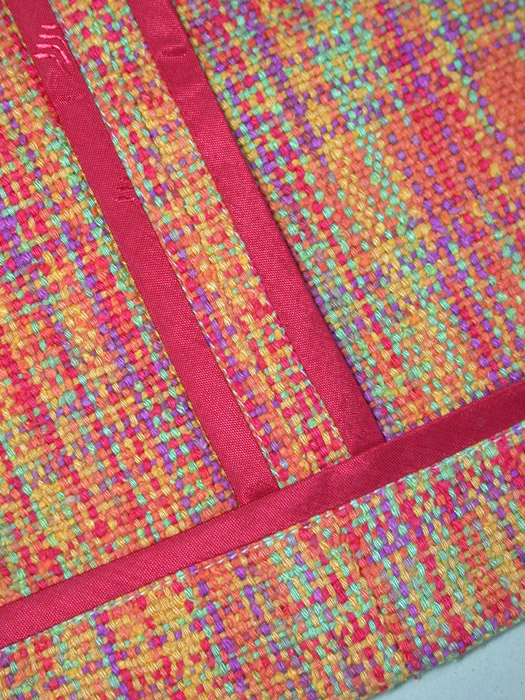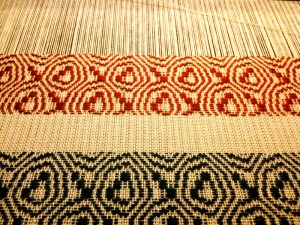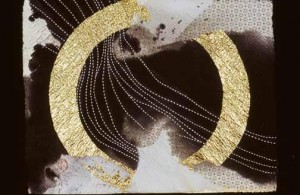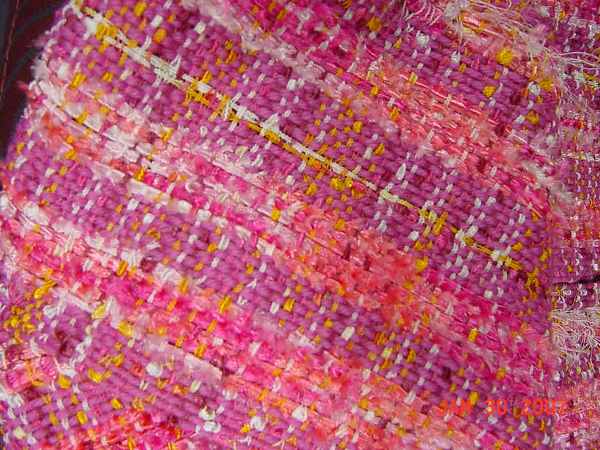
This three technique workshop will have your hand woven garments looking like it was made by a professional.
First we’ll explore all the different ways to make seams. Don’t have a serger? Not to worry! There are lots of alternatives. Learn how to finish the inside as well as the outside of your hand-woven garments. This class will cover French, Hong Kong, bound, felled, welts, and serged seams; piping, cording, binding, and more. Lots of terrific ideas! Learn professional and couture finishing techniques appropriate for use with hand-woven fabrics!
Then we’ll move on to Closures.
Give your jackets and vests knock out closures. Triangular bound buttonholes, machine and hand-worked buttonholes, buttonhole facings, fabric cords for loop and button closures, and other suggestions for closing up those jackets and vests will be shown, step by step through digital slides.
And lastly we’ll be working on fit.
Do you know the difference between design ease and wearing ease or semi- fitted and very loose fitting garments? Did you know that commercial pattern companies and ready-to-wear designers don’t use the same industry standard measurements? The mystery behind fitting and altering patterns is unfolded right before your eyes! Taking proper measurements, grading techniques, and a tutorial on draping are all part of the agenda.
Monday, February 4, 2013
$100 Member, $130 non-member
Workshop is going to be held at the Creekside Inn, 3400 El Camino Real, Palo Alto
Signup with Paula Dennis at the Guild Meeting or send your deposit of $100 to Paula Dennis, P.O. Box A-51, La Honda, Ca. 94020. Email your questions to Paula at lahondaknitter@gmail.com.






